THE STATE OF THE MARKET
AN
INSIDER’S VIEW OF THE LATEST TRENDS IN LUXURY RESIDENTIAL REAL ESTATE
BY ELIZABETH
STRIBLING,
PRESIDENT, STRIBLING & ASSOCIATES

In
New York City, all conversations ultimately lead to real estate. This
fall, speculation about the state of the real estate market has been
rampant. Prompted by a national spate of magazine cover articles and
locally featured front page stories, New Yorkers have been assaulted
over the past several months by a dizzying media barrage of warnings
about an impending real estate bubble.
Interestingly,
there were similar ominous cover story articles in magazines even back
in 2002 such as the November 4, 2002 issue of Fortune predicting a fall
in real estate. However, at that time, residential real estate simply
continued to rise. Today, what’s really happening? How high can
prices go? Have we finally reached the top? Should I sell? Should I
wait to buy? Does the famous bubble really exist? If so, will it burst,
or just slowly drift down to a soft and safe landing? Questions abound.
The Core Strengths of the New York Market
Dire
warnings about a monumental real estate collapse simply do not seem
warranted in New York City. The local economy is good, crime is down,
employment figures are up, and New York City is a destination city with
an almost full hotel occupancy rate.
All
of the national articles about “flippers” who speculatively
invest in second home condominiums in Florida and Las Vegas and then
quickly sell do not apply to our local marketplace. First of all, high
Manhattan prices discourage speculators. Secondly, strict cooperative
board requirements prevent such buyers from even purchasing cooperative
apartments, and most New York condominium developers require a purchaser
to close on a unit before they can resell it. Even after closing, the
double transfer taxes for a first-time condo seller who wishes to “flip”
the unit are not favorable for a quick profitable re-sale.
New
York City purchasers buy to live in their sought-after property and
this creates a stable market. However, if indications are encouraging
that the New York property market is not about to plunge, is it about
to tumble?
What Do the Recent Manhattan Sales Figures Tell Us?
Third
quarter residential sales statistics were released in early October
and the local media seized upon one aspect of the numbers and, almost
gleefully, announced the beginning of “bubble trouble” in
Manhattan.
A
proper analysis of the overall statistics themselves provides an explanation
of the true meaning of these comparative numbers.
The
third quarter showed a significant shift in the percentage of smaller
apartments that were sold versus larger units, and therefore the overall
average price was weighted down due to lack of activity at the upper
end of the market. Thus, the figures released by Miller Samuel, one
of the appraisal firms that provided recent statistics, noted a 12.7%
drop in the average sales price from $1,317,528 in the second quarter
of 2005 to $1,149,813 in the third quarter. However, it also must be
noted that the average price per square foot for the same third quarter
reached an all time high of $984, thus rising 1.4% from the previous
quarter.
In
addition, prices for studios and one bedrooms leapt 10%, and overall
apartment prices are up 10% from last year at this time. The average
Manhattan sales price in the third quarter of 2004 was $1,044,166, according
to Miller Samuel, compared to the higher 2005 third quarter average
price of $1,149,813.
In
the upper end of the market, there were very few sales compared with
the previous quarter and thus the average price of a four bedroom or
larger apartment came down to $6,823,346 in the present quarter compared
to $10,639,792 in the previous quarter which included several very expensive
sales. However, again, this lower quarterly figure was higher than the
same quarter a year ago when the average price of a four bedroom plus
apartment was $6,745,007.
In
conclusion, although the average price for the third quarter of 2005
was down, it was the higher number of sales in studios and one bedrooms
versus a lower than usual amount of sales in the larger luxury category
that tipped the average downwards.
That
said, it must be noted that overall inventory is rising, and, in general,
apartments are taking a longer time to sell. Most of the increase in
inventory is due to a wealth of new condominium units that are coming
on the market due to a vast increase in new condominium construction
throughout the city. Thus, the present rise in inventory does not reflect
nervous sellers anxiously placing their apartments on the market due
to a fear of a declining market but rather the biggest building boom
in years.
How
readily this creation of new housing will be absorbed will depend on
market conditions as each development project comes to the marketplace.
Naturally, geographic location and the luxury of finishes will dictate
pricing; as neighborhoods expand throughout Manhattan, there should
be a wealth of choice providing a variety of price-points throughout
the city for future new condominium residences.
The
fact that apartments are taking longer to sell may simply reflect over-ambitious
pricing by sellers. After four years of double-digit price increases,
the residential market appears to be stabilizing, albeit at a high-level
plateau price point. Today, sellers can no longer simply add ten percent
to the last comparable apartment that sold, and expect a ready sale
due to an ever-rising market.
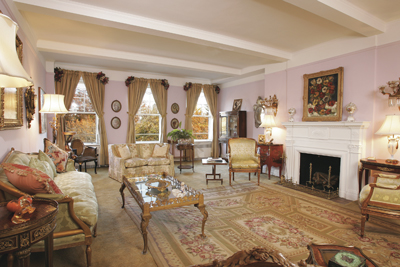
Armed
with information carefully culled from website browsing, buyers are
now beginning to make lower offers or no offers at all on properties
that they believe are too highly priced. After several years of having
to bid the asking price or even above on desirable new offerings, buyers
are beginning to negotiate a bit more often. However, if property is
fairly priced, negotiation room is still low.
Price
reductions are also more prevalent but usually indicate initial overpricing
rather than a declining market. Pricing, in any market, is always just
as important as location. In fact, pricing is the number one most important
factor in a successful sale. Today, in a real estate market that is
no longer frenzied, and where the message is perhaps even mixed, pricing
is more important than ever.
The Rental Market Grows Stronger
Meanwhile,
at the same time that the sales market remains strong, the rental market
is rapidly gaining strength. Vacancy rates have dropped to below 1%,
well below the 2% point where rents historically begin to rise.
Many
purchasers who have been priced out of the sales arena have retreated
to the rental market. Certain sellers have chosen to rent rather than
buy a new apartment, either betting that prices will come down or, in
the case of new retirees, choosing to use the proceeds of their sale
as retirement investment income. Also, brokers are beginning to see
multiple offers for the same rental unit occurring with more regularity.
The
only area of the rental market that is not seeing a lot of activity
is the super high end, above $15,000 a month. However, whole townhouses
or duplex or triplex units within houses, priced between $6,000 and
$12,000 a month, are readily being leased.
It is predicted that the rental market should remain strong for the
near future as very few new rental buildings are being built in the
city, and many older rental buildings are being converted to condominiums.
Soaring
land prices and the costs of new construction are prompting developers
to build more lucrative condominiums versus rental units, and equally,
the huge difference between the return on a rental building and the
rewards of a condominium conversion are too tempting for many landlords,
or recent new owners, of rental buildings to pass up.
In
the future, if interest rates increase, as they no doubt will, many
potential buyers will opt to rent; however, if a rise in rates does
drive sales prices downwards, other buyers and investors will choose
to return to the sales arena. In the meantime, the rental market is
not only truly healthy for the first time since the aftermath of September
11th, but it is robust and strong.
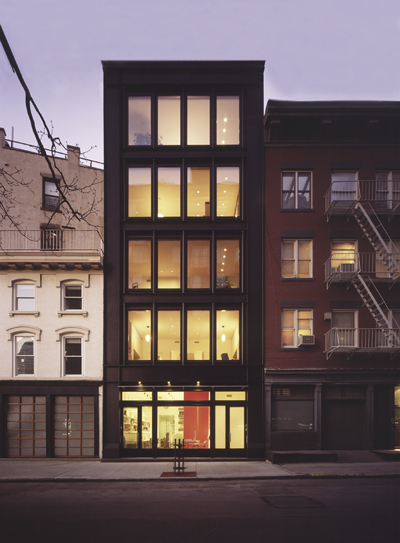
Top-of-the-Market Townhouses Are Selling
Another
segment of the residential market that shows enormous strength is the
townhouse market. As the city continues to be safer with crime rates
falling each year, buyers are flocking to townhouses and pushing prices
rapidly up along the way. In the last three months, three townhouses
on East 64th Street have each either closed or entered into contract
at over $20 million, and a fourth house on the same street has sold
at just under this $20 million figure. Rumor has it that an additional
house on East 67th Street has also just issued a contract at over $20
million.
Clearly,
luxury townhouse living is at the top rung of the Manhattan lifestyle.
The motivation for townhouse buying is not just a quest for privacy
and outdoor garden living but also for just plain space. A super-wide
house – 25-feet-wide and up – can provide much more square
footage than a comparable four to five bedroom cooperative; such a house
can offer 10,000 square feet of living space. In fact, owning a wide,
or even better, a mega-wide house has become the Manhattan status symbol
of the moment.
If
a typical townhouse is 18-feet-wide, anything below that is thought
to be on the small side, and proportionally, a 20-foot-wide house becomes
the entry-level standard of luxury buying. Thus, an even larger 22-foot-wide
house is deemed extremely spacious and a 25-foot-wide house is called
a mansion.
Ambitious
tycoons scout for even wider houses, a rare breed indeed. Often, the
only way to obtain such a mega-mansion is to create it yourself. The
opportunity to do just that exists today on tony Sutton Square.
Recently,
an owner of an already luxurious 25-foot-wide house overlooking the
verdant and exclusive Sutton Square community garden (neighbors include
the Secretary General of the U.N.) decided to purchase the home next
door. This adjacent property was not an ordinary residence but actually
two houses that had already been combined into a 41-foot-wide mansion.
Deciding not to proceed with the renovation work to join the properties,
the owner has now placed the original three adjoining houses on the
market for $42 million.
Architectural
drawings are available that show just how a rich and lucky buyer could
create a 66-foot-wide palace of 20,000 square feet. With sweeping river
views, and access to an exclusive private garden, this could easily
win the award for trophy house of the year.

Townhouse Living with Luxury Tower Services
The
demand for the privacy of townhouse living has even entered the apartment
market arena. All over town, developers of new condominiums are offering
townhouse living within their newly constructed high-rise buildings.
Whether
called maisonettes, after the prestigious duplex apartments that dot
the fancy cooperative buildings up and down Fifth and Park Avenues,
or townhouses or town homes, these ground floor residences are designed
to offer apartment dwellers the best of both worlds: a private entrance
with the prestige of a separate exclusive space and the white glove
services of a condominium building.
Recently,
new condominiums such as Morton Square in the West Village, the Link
in the West 50’s, the Arcadia on East 79th Street and First Avenue,
and the TriBeCa Summit in TriBeCa have offered such custom townhouse
units for sale. Continuing this trend, future new condominium developments
such as The Highline 519 on West 23rd Street will also feature townhouse
living. Uptown, the Senneca Terrace on East 112th Street will offer
1,300 square foot one bedroom townhouse duplexes with an 800 square
foot outside garden.
For
those buyers who want the ultimate prestige of living in an established
cooperative building with the exclusivity of a private residence, the
answer is the previously mentioned traditional maisonette apartment.
From time to time, such unique apartments come on the market. Currently,
such a listing is to be found at 72nd Street and Park Avenue in one
of Manhattan’s most sought-after Candela-designed cooperative
buildings.
Featuring
an exceptional 36 foot drawing room and 11 foot ceilings on the ground
floor, this stately 11 room duplex is offered for sale at $8,250,000.
Whether in a long-established cooperative, or a brand new condominium,
this hybrid form of an apartment/townhouse dwelling has never been so
popular.
Wealth of New Construction in Chelsea Typical of Many Neighborhoods
Throughout
Manhattan, neighborhoods are pushing beyond their traditionally defined
borders and re-inventing themselves in an explosion of residential construction.
Even nondescript former commercial areas are being transformed into
glossy new residential corridors.
The
skyline is changing throughout the city. Among Manhattan neighborhoods,
certainly the most popular girl at the dance today is Chelsea.
Revitalized
with big-box stores and trendy restaurants, Chelsea has replaced the
Upper West Side as the destination address for young professionals.
New zoning has led to the creation of 2,000 new apartments and the future
development of the Highline will push the limits of Chelsea farther
north.
Meanwhile,
the side streets of Chelsea are about to see a wealth of new residential
construction and condominium conversions of former industrial buildings.
At 420 West 25th Street, between Ninth and Tenth Avenues, a former 100,000-square-foot
printing plant is about to be transformed into Loft 25, where real downtown
loft living will be created in Chelsea.
Nearby,
Chelsea House, a 13-story 64-unit condominium tower, will rise at 130
West 19th Street between Sixth and Seventh Avenues on the site of a
former parking garage. Other new side street developments include The
Paradigm Building at 146-148 West 22nd Street, the Soma at 116 West
22nd Street and the Bluehaus at 245 West 19th Street.
In
close proximity to hip neighborhoods such as the Meat Packing District
and SoHo, the clamor for Chelsea is loud and clear. This is especially
notable after the previous two years when there were dire predictions
that rental housing in Chelsea, especially along Sixth Avenue, was overbuilt.
Today,
in contrast, sales prices in Chelsea are rising, and last year’s
rental prices were consistently among the strongest in the city with
the lowest vacancy rate. Following the arrival of trendy art galleries
from SoHo to western Chelsea in the late 1990’s, the face of Chelsea
has transformed into the hot new neighborhood of today.
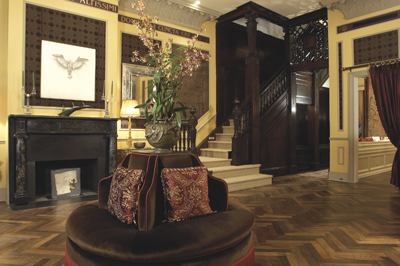
New
Residential Construction Surges on the West Side
Meanwhile,
as Chelsea is the star of the current season, the entire west side of
Manhattan is contemplating a burst of construction that is sure to lure
many new occupants.
On
the Upper West Side alone between 59th and 72nd Street, in the area
between Lincoln Center and the Hudson River, more than a dozen new developments
are planned or being proposed over the next two years. On the heels
of the successful Time Warner Center at Columbus Circle, sites have
been purchased on West End Avenue and Amsterdam Avenue with plans afoot,
pending approval, rezoning permits and in some instances negotiation
of air rights, that would transform the Upper West Side skyline.
Already
on Central Park West, a two-wing glossy condominium residence is being
built on the former Mayflower Hotel site at Central Park West between
61st Street and 62nd Street. Designed by Robert A.M. Stern, the future
Fifteen Central Park West will consist of The House, a 20-story building,
and The Tower, a 43-story tower, and offer super-luxury apartments overlooking
Central Park and also Broadway.
Many
large high floor duplex apartments facing Central Park have already
gone to contract at around, or above, $40 million - how’s that
for a view commanding a top price? Additional Upper West Side developments
include those of Fordham University which has submitted plans that will
include two tower residential apartment buildings on their campus on
West 60th-62nd Streets between Amsterdam and Columbus Avenues, and the
Empire Hotel, located between Broadway and Columbus on West 62nd- 63rd
Street, which is slated to be demolished and replaced with a residential
building.
If
all of the currently projected Upper West Side developments are realized,
billions of new construction dollars will be spent, and thousands of
new apartments will be created.
Construction
of new residential towers is already radically changing the tone of
two major west side thoroughfares: West 42nd Street and West 34th Street.
On the far western stretch of 42nd Street, a 61-story 550-unit condominium
tower entitled The Orion at 350 West 42nd Street is scheduled for completion
in the spring of 2006. Featuring a fitness center, screening room, lap
pool and business center, The Orion is aiming to offer luxury living
in an area not previously known for a high-end residential lifestyle.
Meanwhile,
several other condominium towers are planned for 42nd Street on Tenth,
Eleventh and Twelfth Avenues as well as a condominium on 43rd Street
and Eighth Avenue. Completion of these buildings would open up a whole
new frontier of Manhattan residential living for bold city pioneers.
Equally,
as the western area near Times Square is poised to be transformed into
a residential neighborhood, plans are also underway to change the personality
of Herald Square. At present, the enormous 692-unit Herald Towers at
50 West 34th Street is being transformed into mostly studio and one
bedroom condominium apartments. This conversion aims to attract young
singles and couples to live in what has previously been a commercial
shopping corridor.
Several
blocks away, a new rental building called Tower 31 is also under construction
at 9 West 31st Street. Designed by Costas Kondylis, this 41-story tower
will bring 283 new rental apartments to this neighborhood in 2006. Shoppers
beware; the neighborhood is changing.

Fifth Avenue Below 42nd Street to Be Transformed
by New Residential Buildings
Nearby,
Fifth Avenue between 26th and 38th Streets has been dubbed “SoFi,”
for South Fifth Avenue. Who would have believed this residential transformation
possible until recently?
Residential
development in this area was initially spearheaded by the Madison Belvedere,
a 404-unit 50-story rental building that was built in 1999, and followed
several years ago by 425 Fifth Avenue, a 67-story luxury condominium
tower designed by Michael Graves. Today, SoFi is about to explode with
new development projects. 325 Fifth Avenue, a glass-encased 250-unit
condominium residence, is rising out of the ground between 32nd and
33rd Streets. Almost sold out, it will offer amenities such as a swimming
pool, fitness center, and screening room.
Other
developments about to sprout up include the Sky House, a 54-story condominium
on the former parish house site of the “Little Church Around The
Corner” at 11 East 29th Street, and Park South Lofts at 43-45
East 30th Street which will have 40 luxury lofts converted from a former
factory.
Demand
for residential property is high all over town. Throughout Manhattan,
neighborhoods are on the march as they expand and assume fresh new faces
to create this sought after supply.
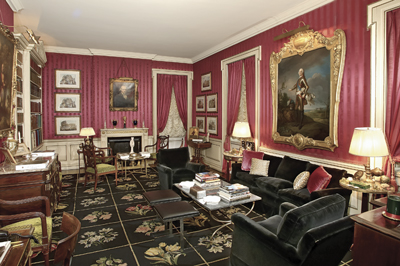
Which Way Is the Real Estate Market Headed?
Will
the demand be sustainable, or will a large infusion of new condominium
construction and conversion tip the market? Opinions differ, but it
must be remembered that condominiums only represent a tiny percentage
of overall housing in the city.
Meanwhile,
the city population is growing each year. Since 1990, New York City
residents have increased by over 900,000 people and city officials are
predicting that the city population will reach 8.4 million by 2010,
up from approximately 8.1 million today. This is a dramatic contrast
from the decades of the 1970’s and 1980’s when the city
was losing population.
Today,
overall economic conditions are good in New York City. The economy has
rebounded and recently Standard and Poor’s gave the city an A+
rating on its debt. This year, Wall Street profits are projected to
hit $14.4 billion, which should yield the big bonuses that historically
have alway bolstered the residential real estate market.
What
predictions can be made? Will the market go up? Probably not. Will the
market go down? Probably not. Maybe we’ve finally reached a more
normal and balanced real estate marketplace, whatever that means.
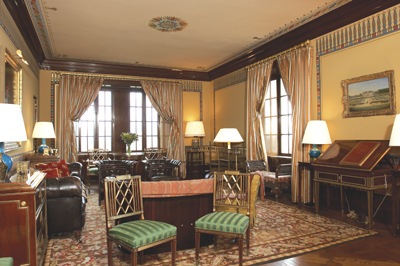
© 2015 TLC Magazine Online, Inc. |